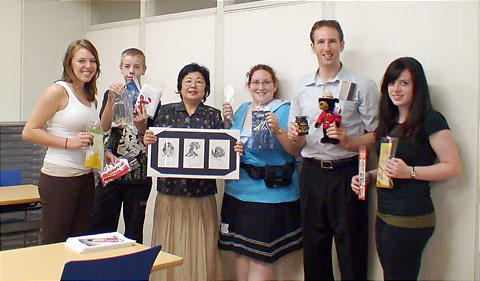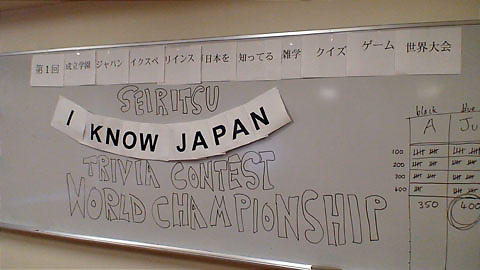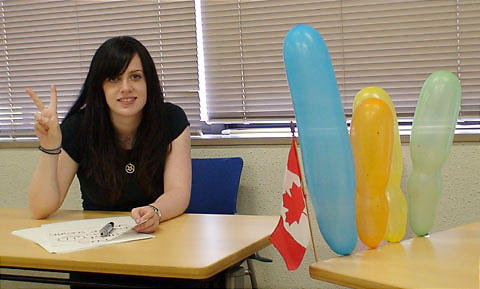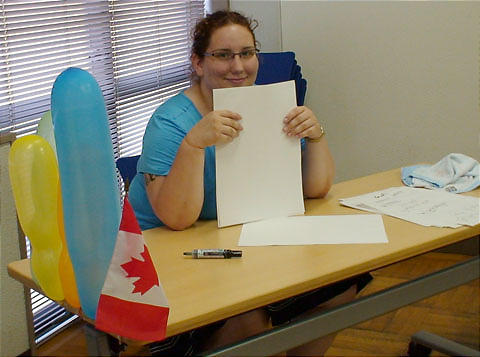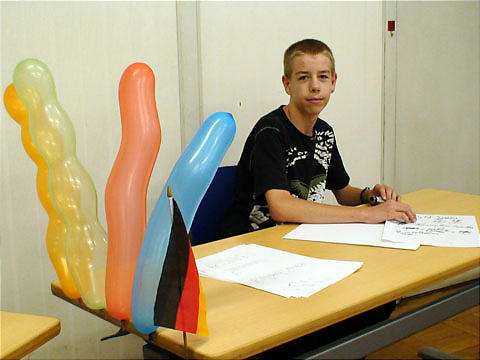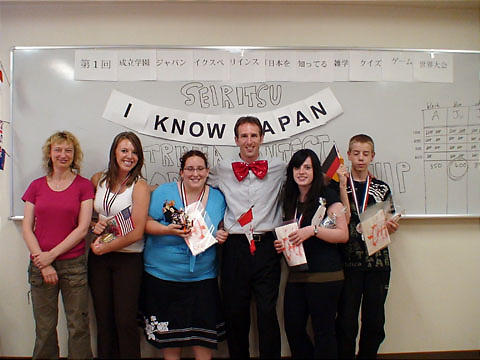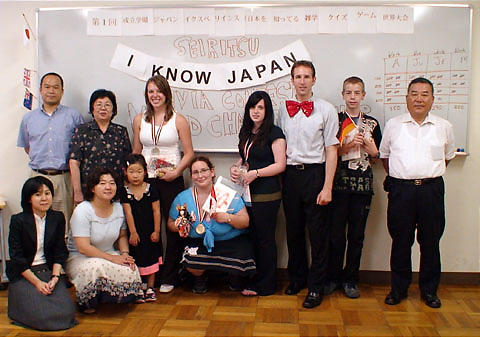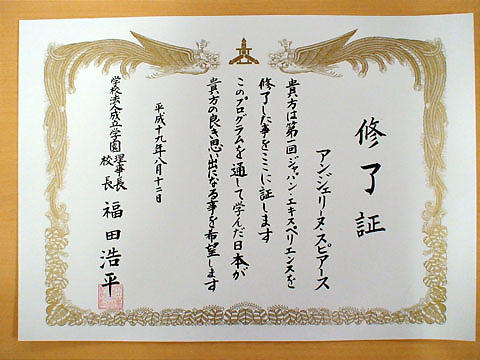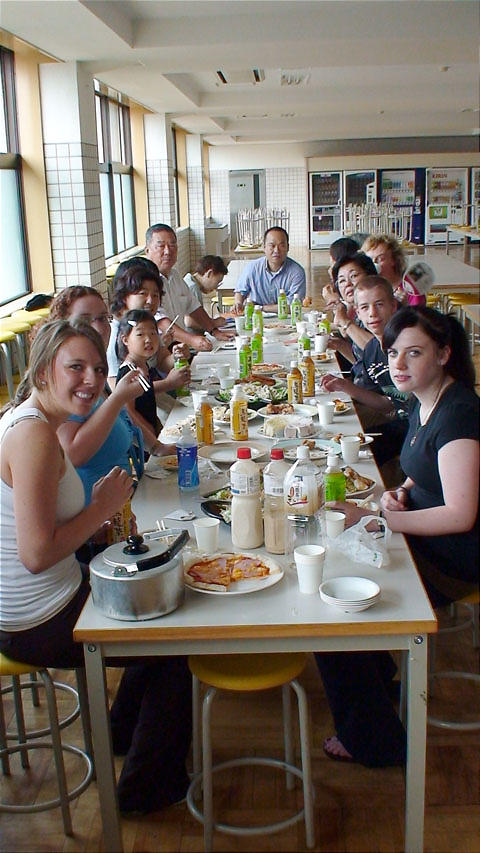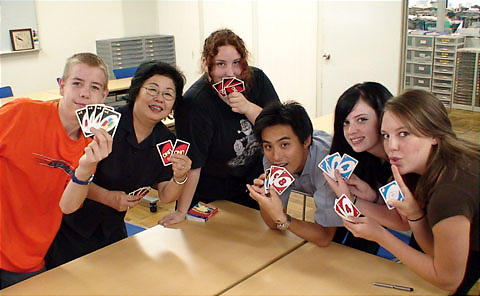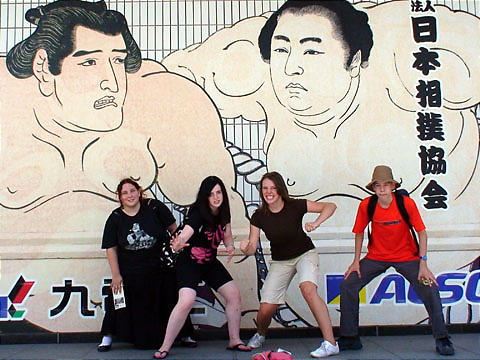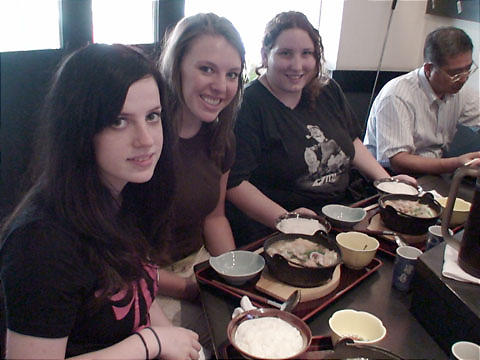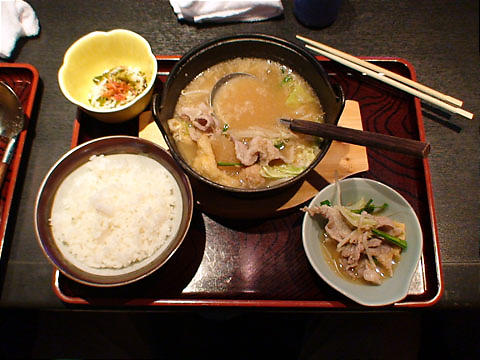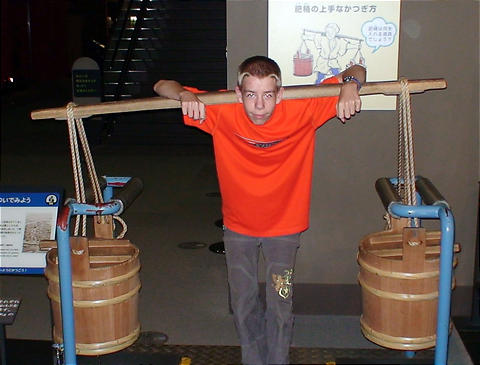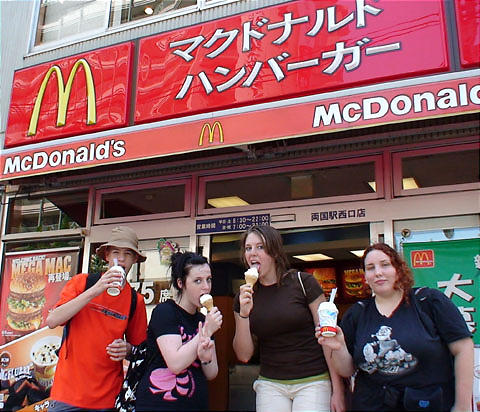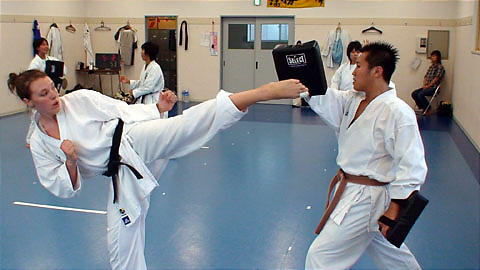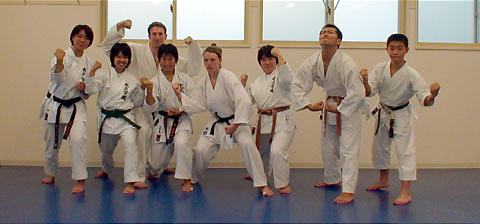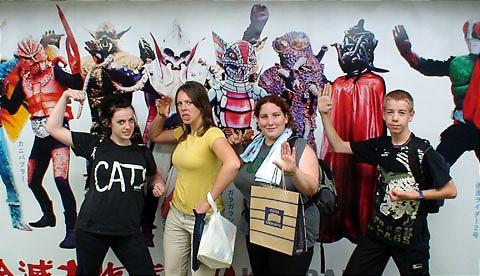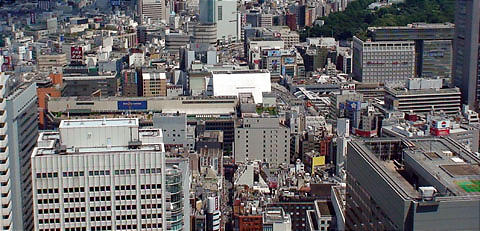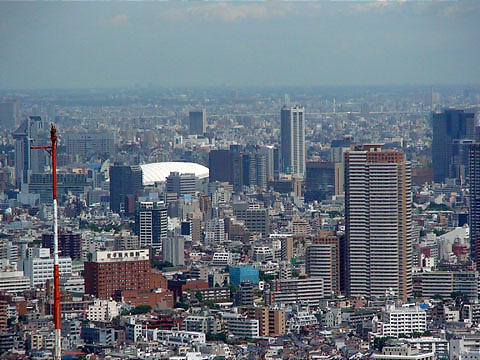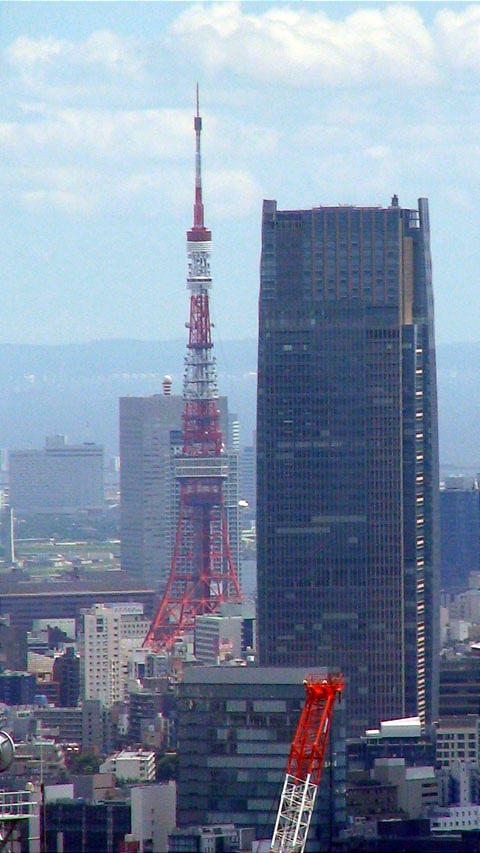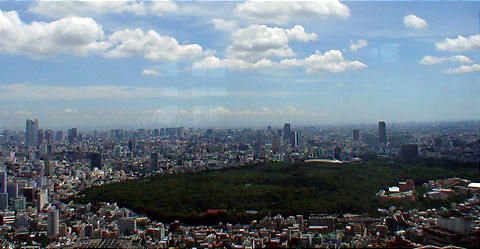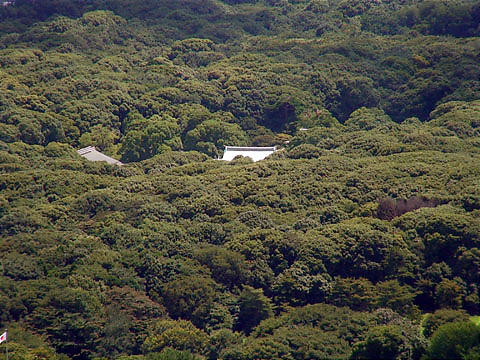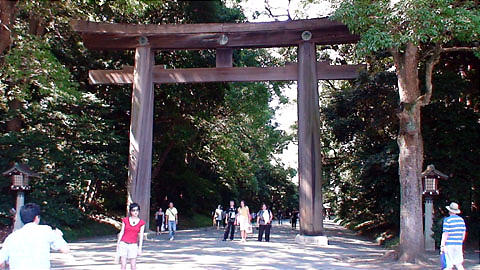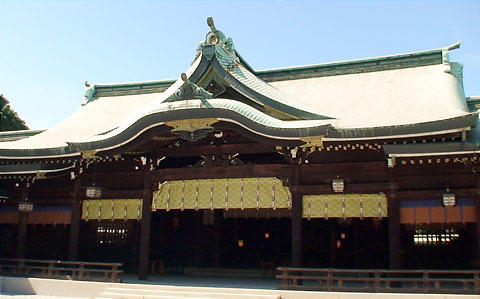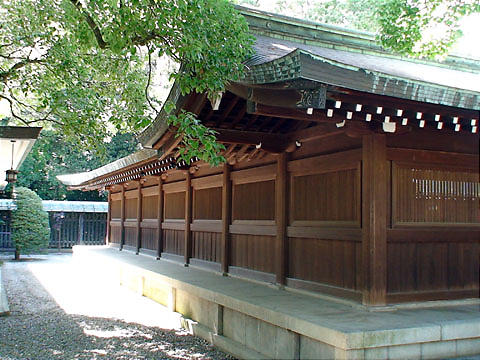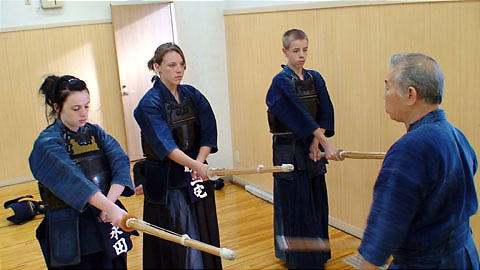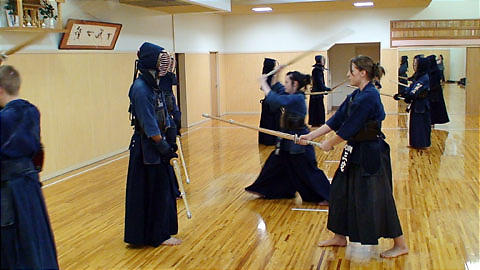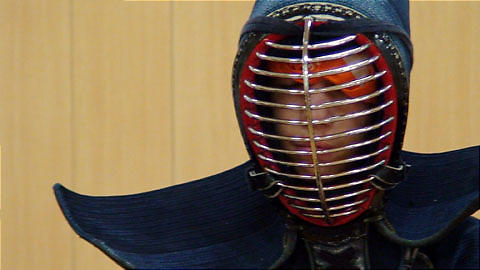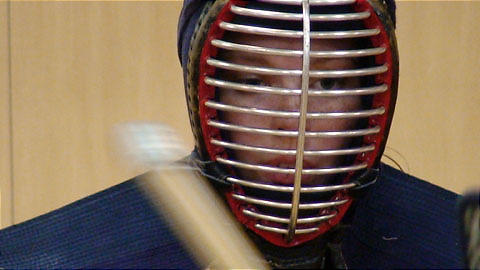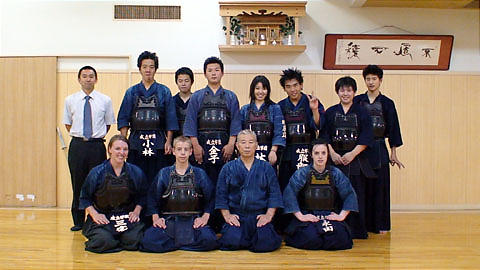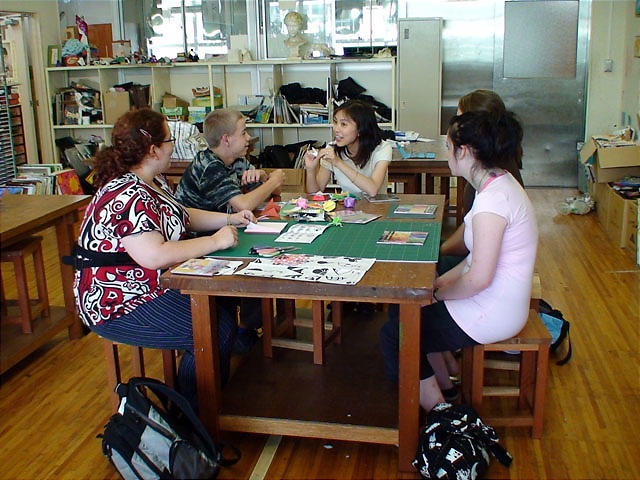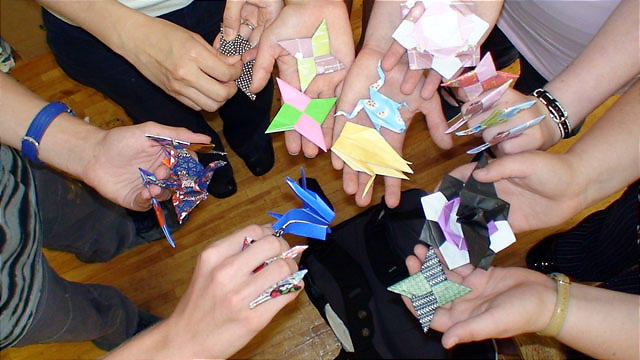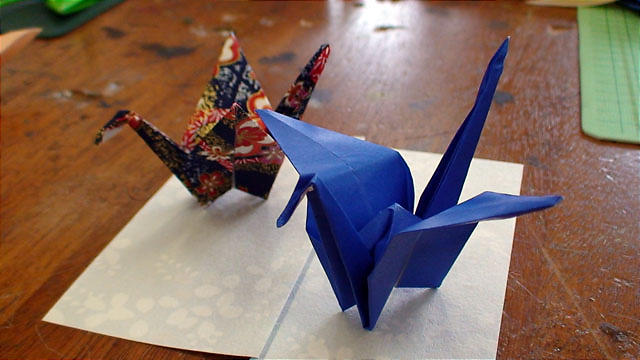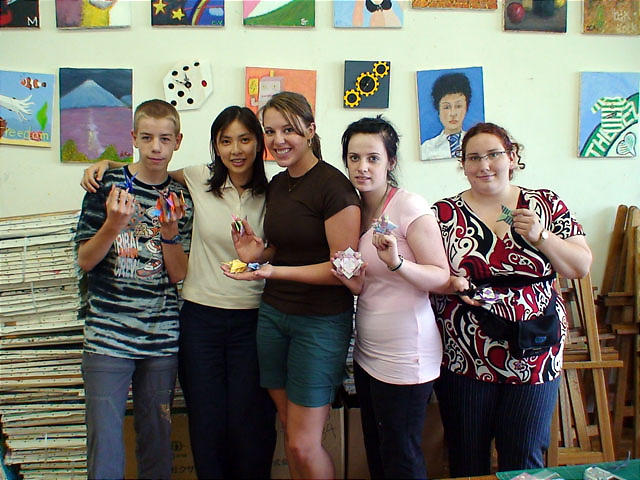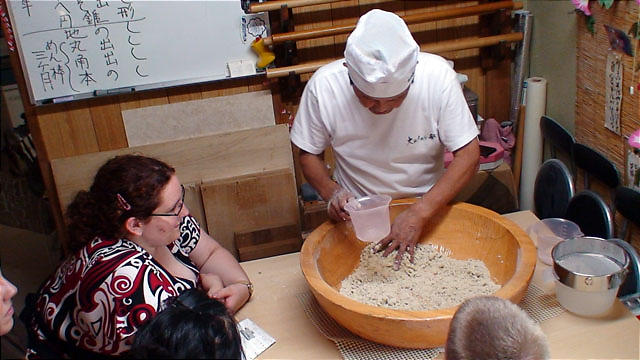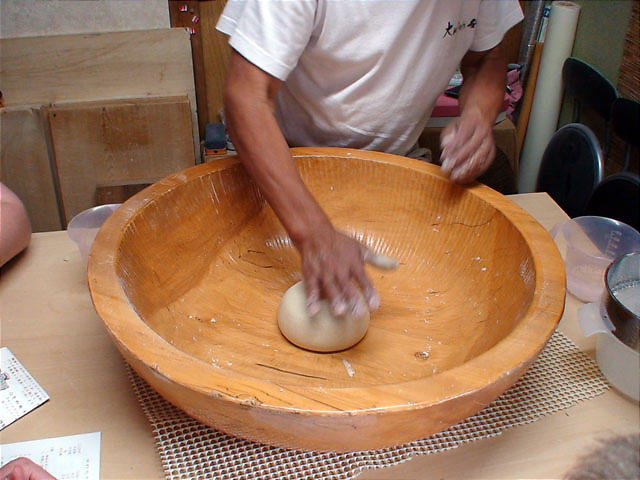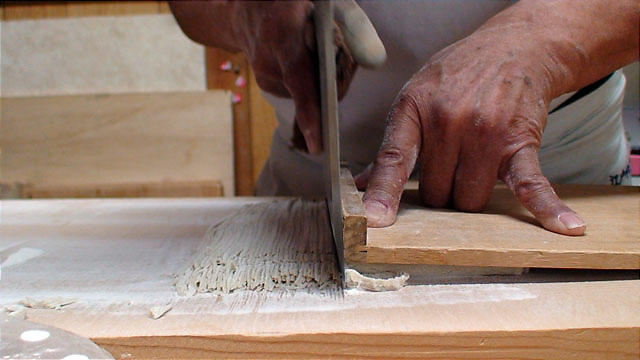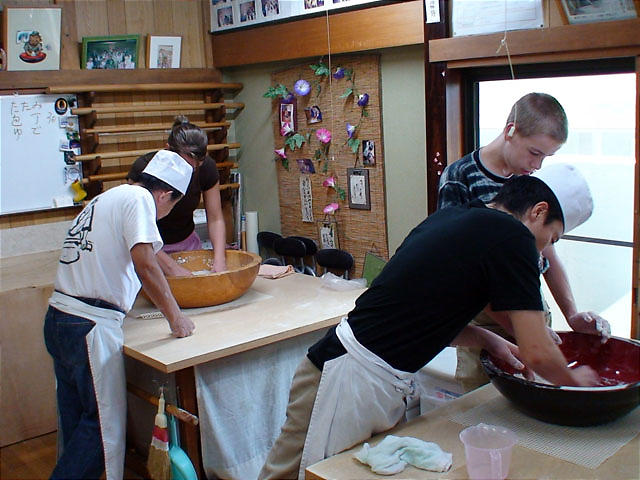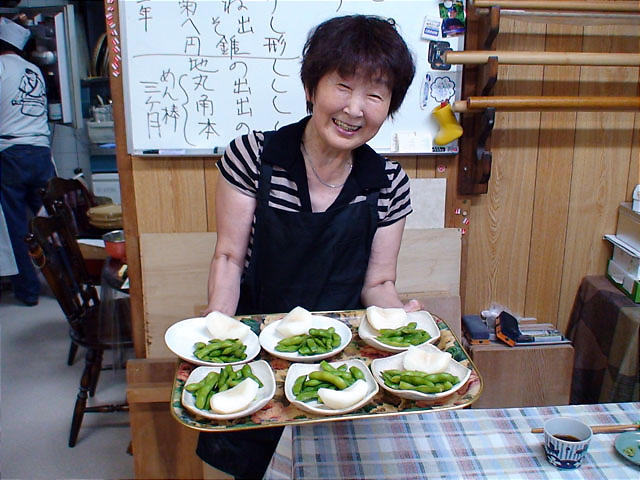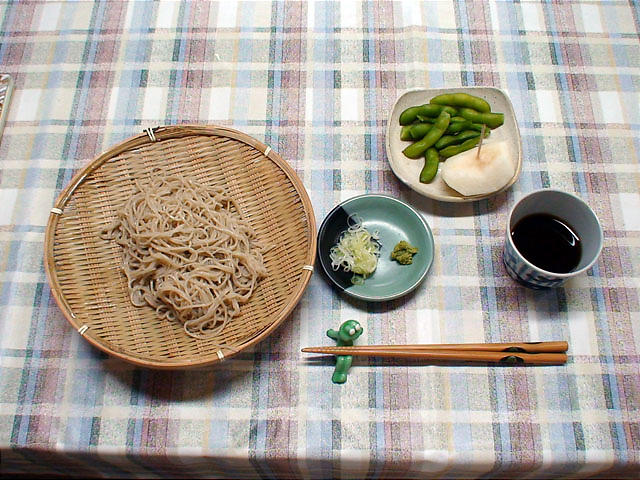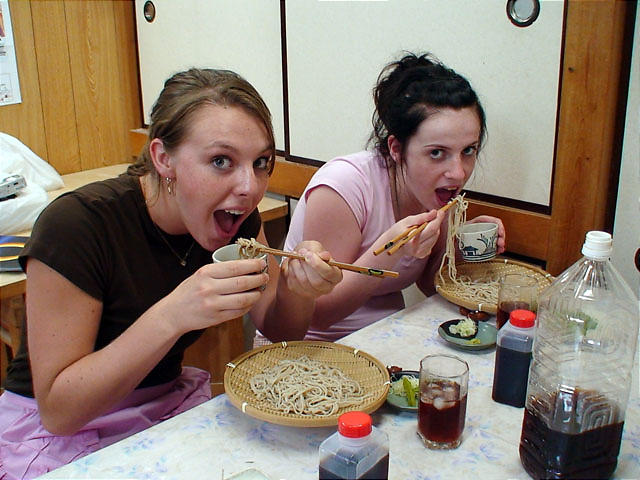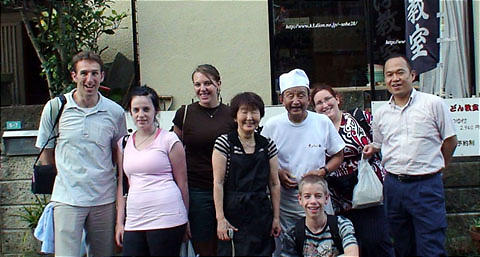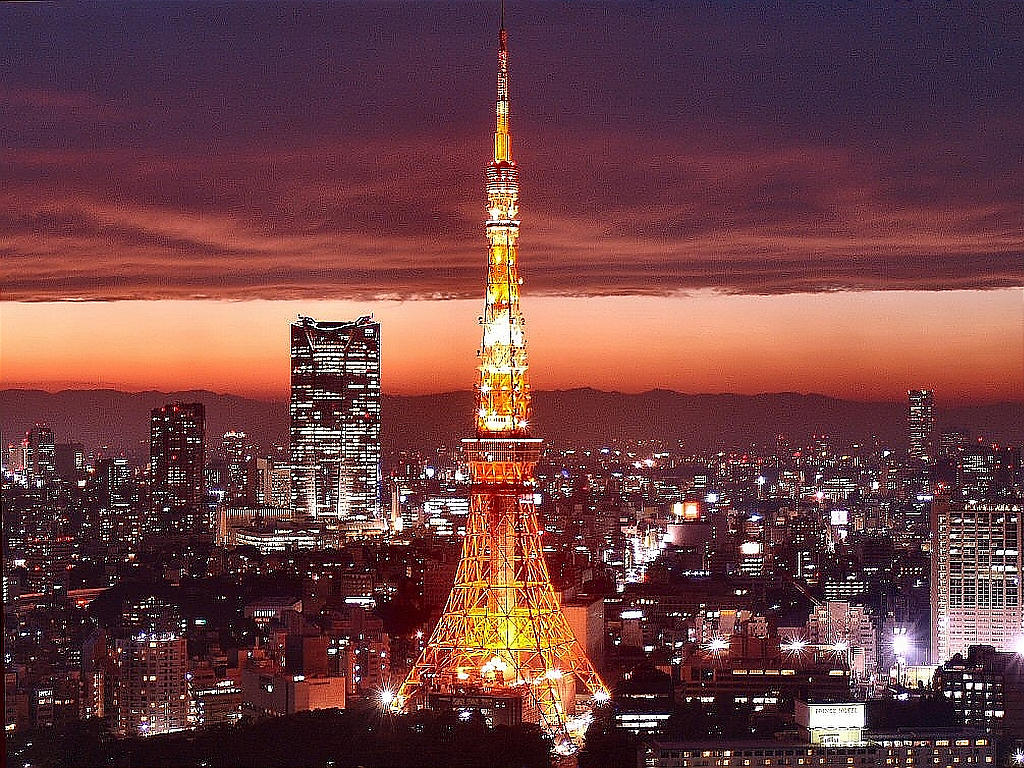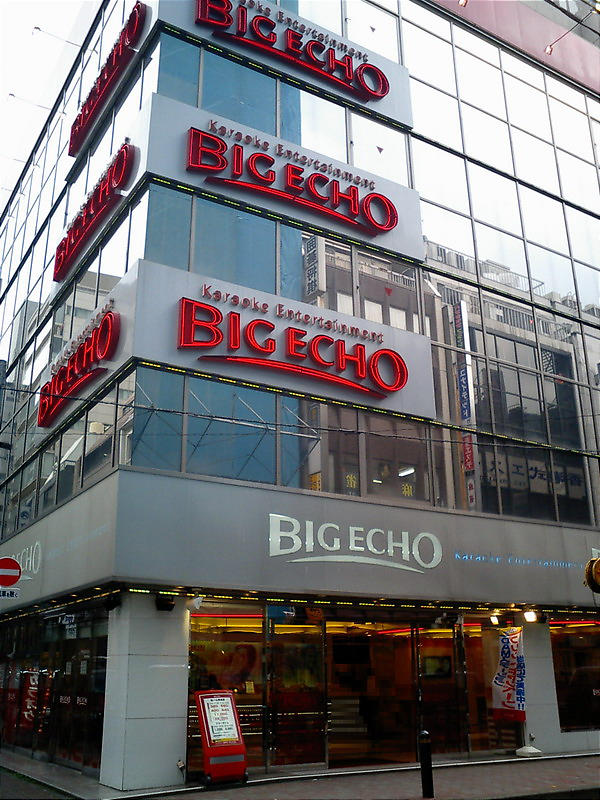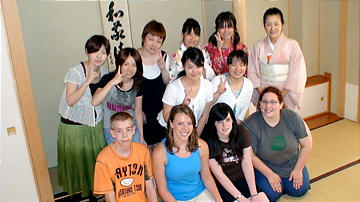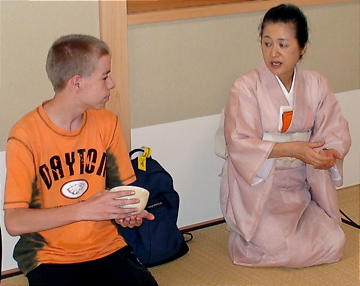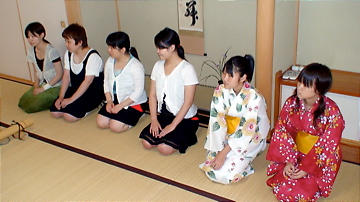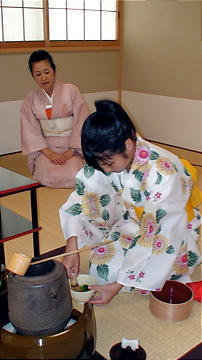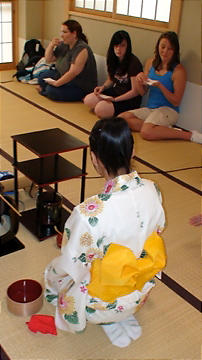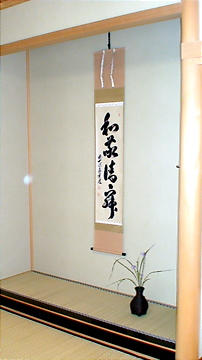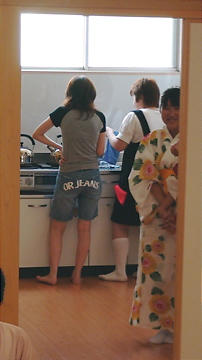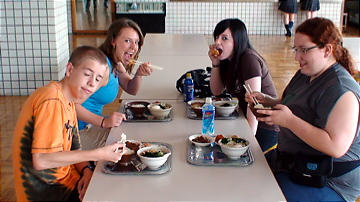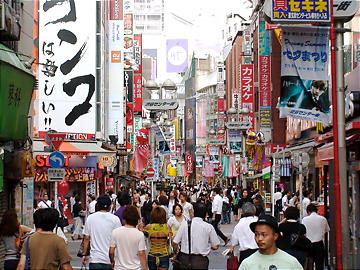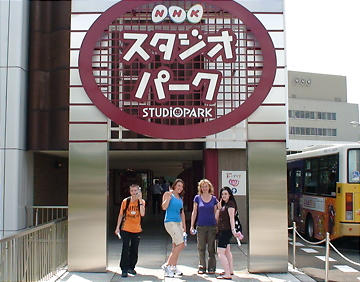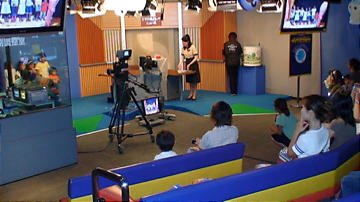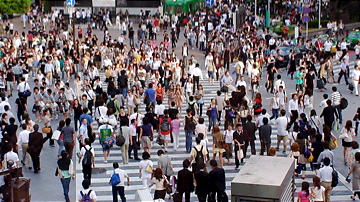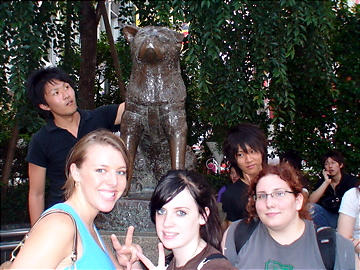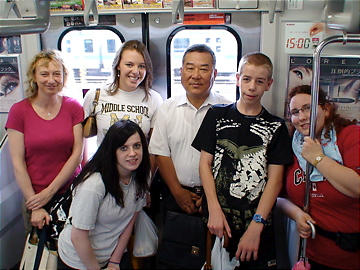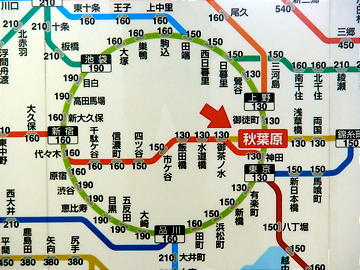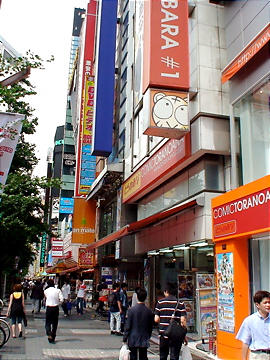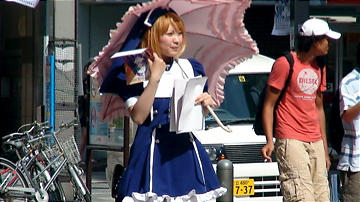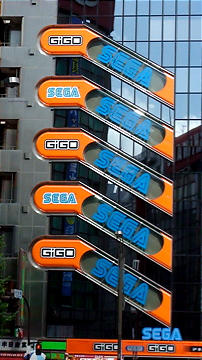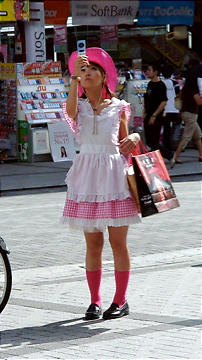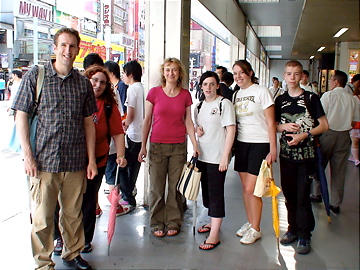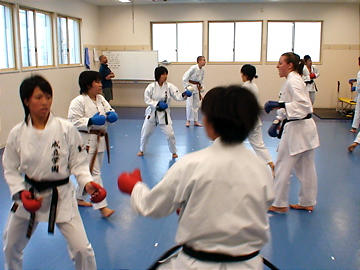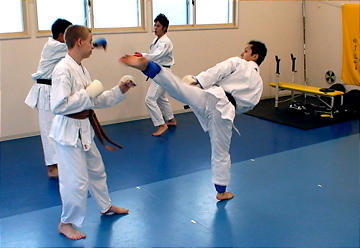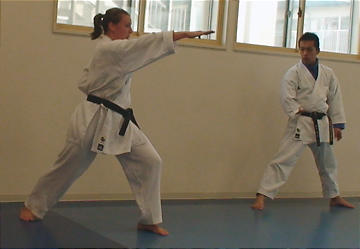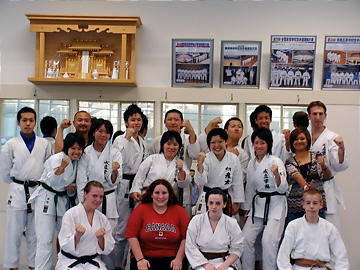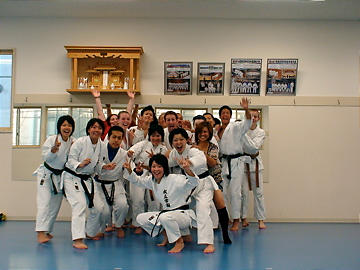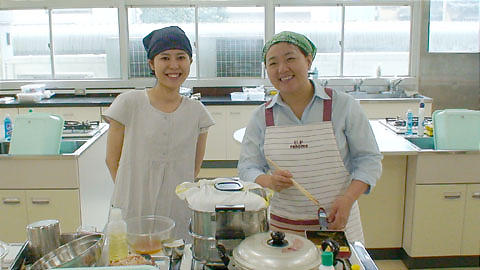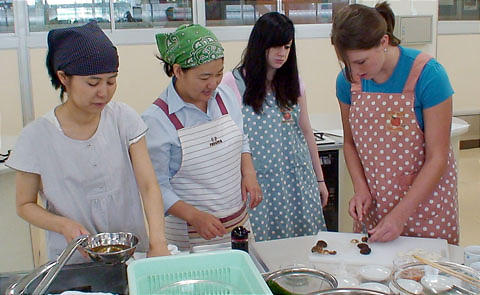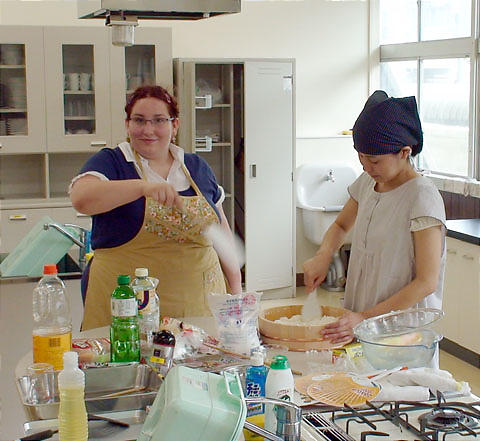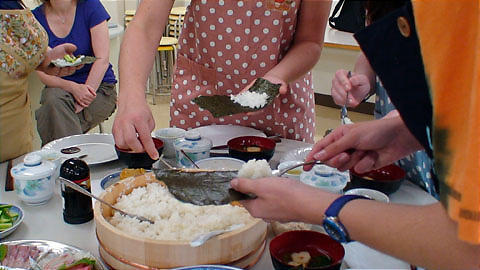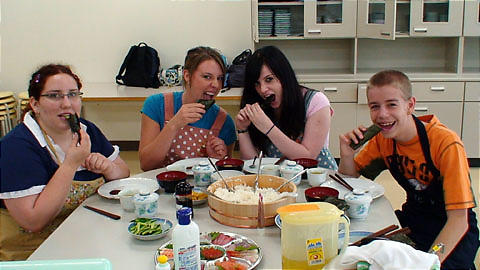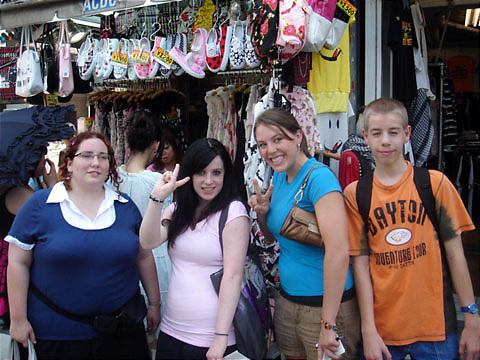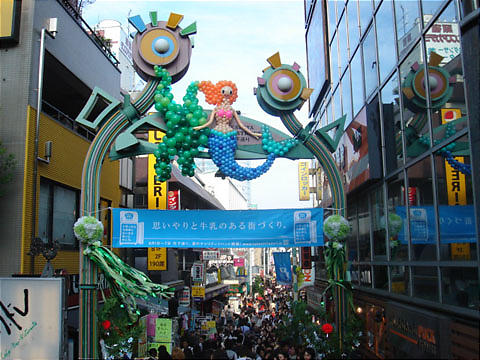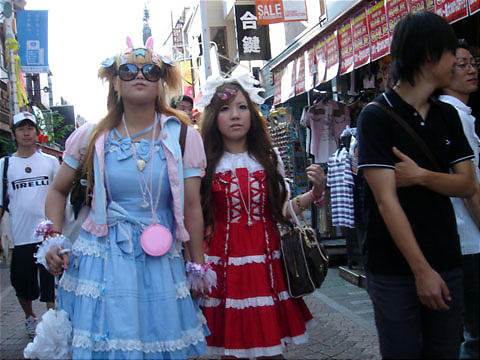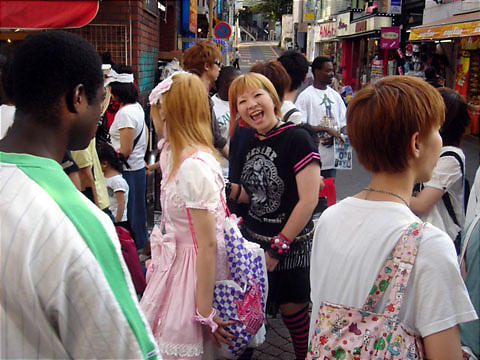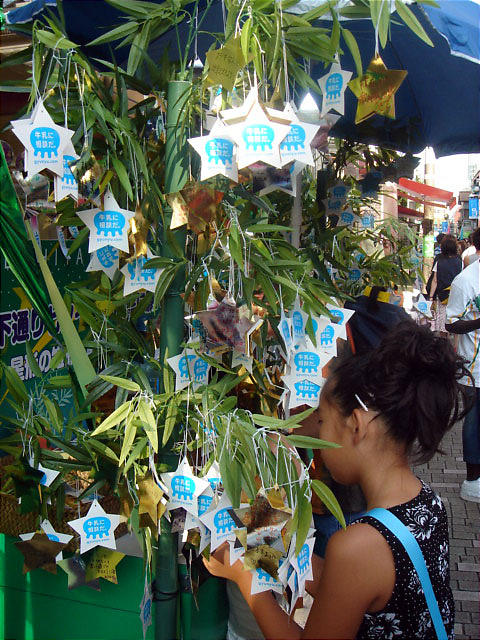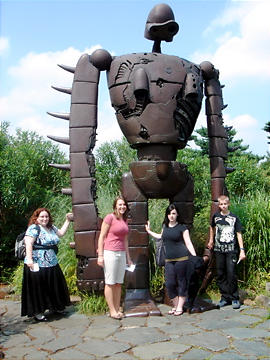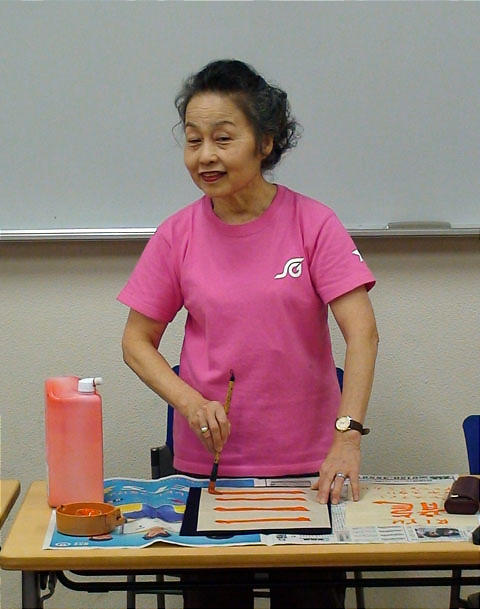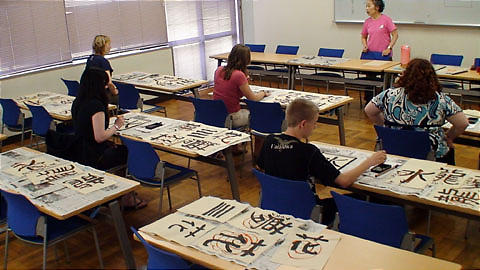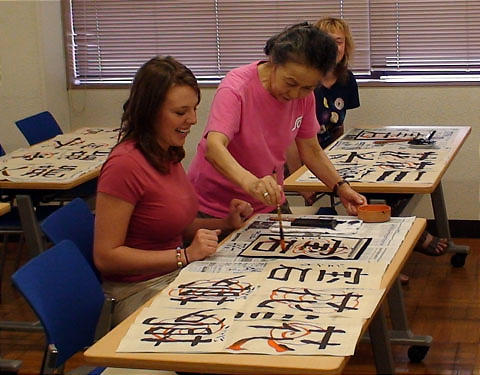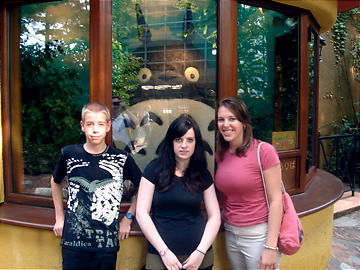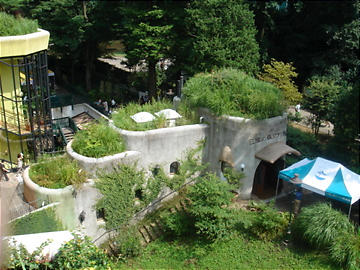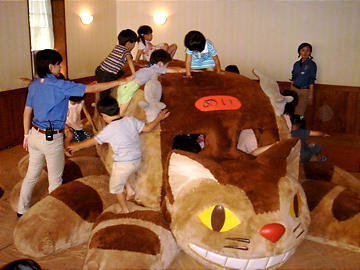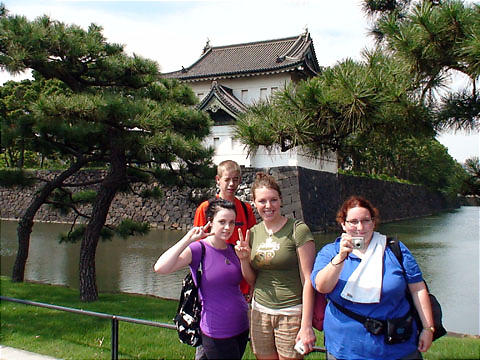
Outside the Imperial Palace gate in the afternoon!!
The day started off by sort of not starting. Marvin arrived on-time, but the 3 girls waited at their bus stop for 45mins with no buses making an appearance. So they hiked back to their home stay house and otoosan (father) Hanai-san drove them to school, or at least tried to. There was an accident somewhere that clogged all the traffic up and the three had an extra 1-1/2hr sleep in the non-moving car.
So when they did make their grand appearance at school at 10:20am, they found Yano-Sensei teaching Marvin Japanese, and he teaching Yano-Sensei German in return.
Alrighty then, Japanese lesson time passed, off to cooking!
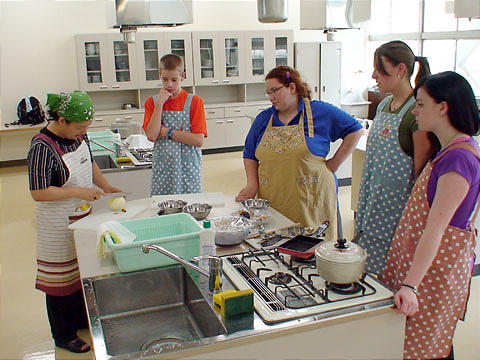
Making katsu-don with Nakamura Sensei!
Nakamura Sensei had the cooking room all prepared for a how-to-make katsu-don lesson.
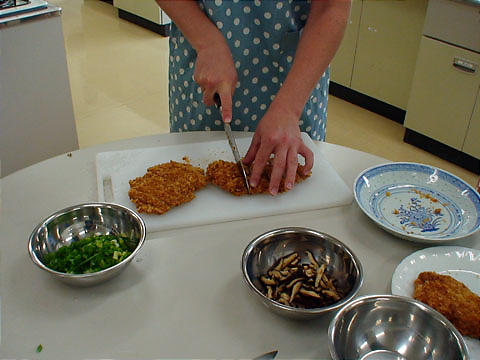
Chopping into bite-size pieces!
Katsu-don is fried breaded pork cutlets on top of rice, mixed with fried onions and egg cooked in a soya sauce base.
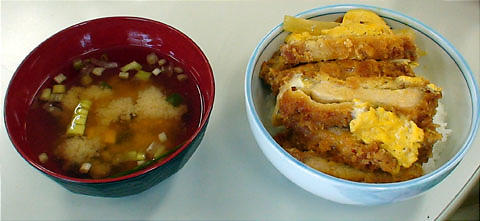
Miso soup & katsudon, a very common Japanese food that people make at home, or eat at the innumerable katsu-don restaurants found all over the place.
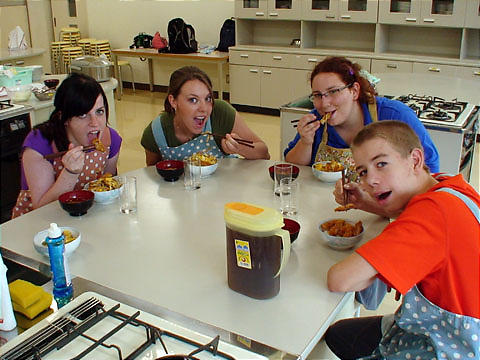
Everyone enjoying the 'katsudon of their labour!'
In the afternoon after an email check, we were off to see the gate of the Imperial Palace, plus the walls and the moat that wraps around it. We whisked off to Tokyo station and walked through the Marunouchi financial business to get to the Imperial grounds.
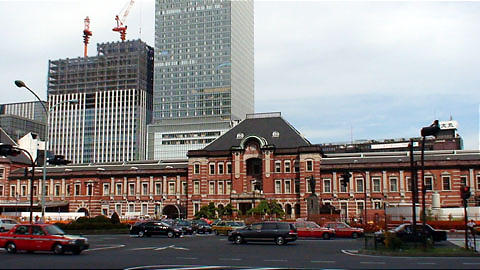
Outside Tokyo station!
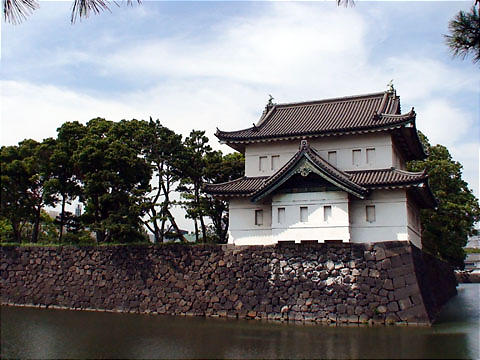
Part of the Imperial palace wall.
While one is not allowed inside, the different gates and the all-encompassing wall were quite impressive, especially when ancient Japan (the palace being hundreds of years old) is right beside massive modern skyscrapers.
Then it was off to Ginza, the 5th Avenue of Japan. A very popular place, people sometimes buy gifts from the many brand name shops, specialty boutiques and department stores, just so the receiver can see the article was purchased in Ginza from the stores name being on the wrapping paper.
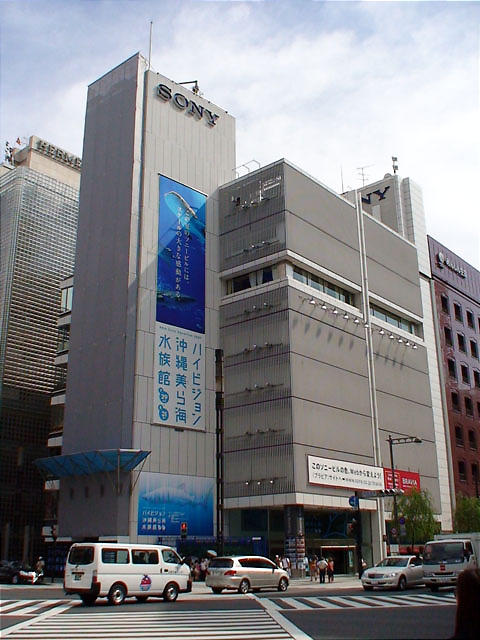
The Sony Building display center!
We first stopped at the Sony Building, which had all the latest and greatest thin plasma TVs, digital cameras, and much more, plus a huge high-definition digital display screen of an aquarium full of whale sharks.
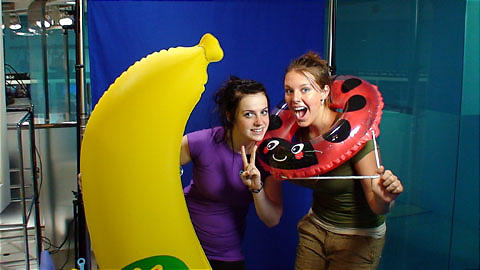
Angeline and Jessica goofing around in front of a blue screen!
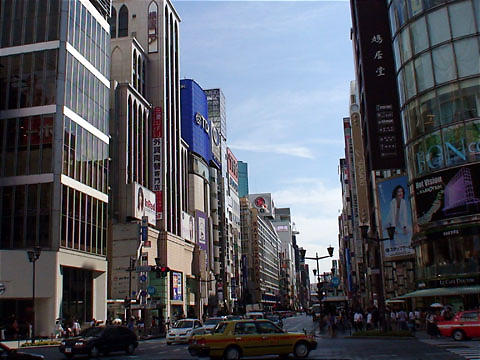
Ginza's main street! (Yano-Sensei's favorite part of Tokyo)
Next was Mitsukoshi, a famous department store with a long, long history of being stocked with the absolute best of whatever. In the basement of all department stores are specialty deli shops, and since this is Mitsukoshi, they had on display 2 melons for \21,000, or over $176US!
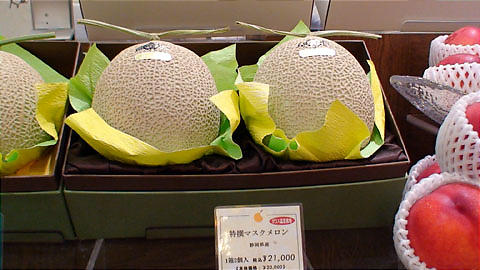
Here they are, in the flesh... I mean rind!
Why you ask? Well, when one looks at the melons, they are perfectly identical, from a famous company (of which there are several) that have a reputation for growing excellent melons. And they’re sold in Mitsukoshi. In Ginza. Hence the price.
From there, everyone got to window shop up and down the main street to see all the amazing architecture of the brand name shops. Marvin and I explored several, plus the front of the Kabuki-za, the main Tokyo theater for kabuki performances.
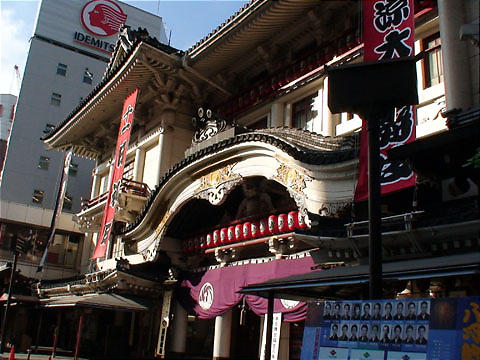
Kabuki-za!
We also tooled around Apple Computer's Tokyo Mac Store store, drooling over every new Macintosh gadget (extra drool from the someone-who-writing-this who has just broken their iPod…). Due to the staff being far too friendly, aka smooth sales people, we escaped and ate ice cream to try to mask the stimulus overload.
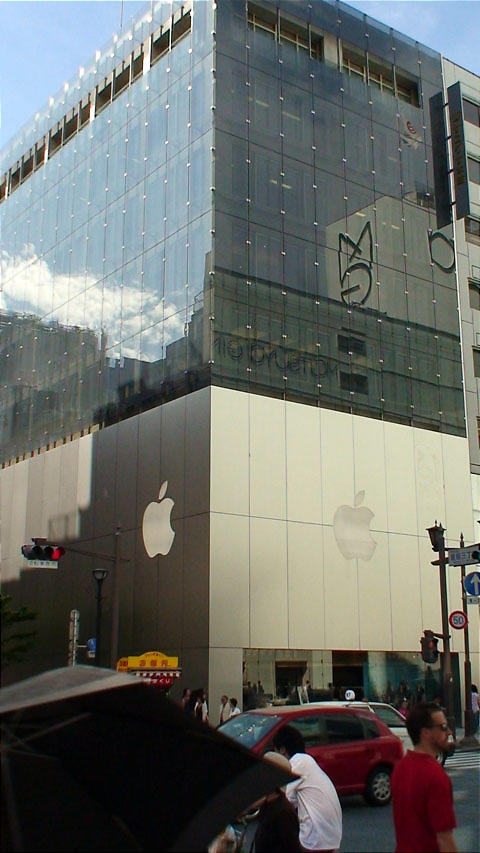
The Mac Store!
Recreating a sense of groupness, we extracted ourselves and returned to school from the Yurakucho station to the Higashi-Jujo station on the Keihin-Tohoku line. There we called it quits for the day, however Jessica, Angeline and Marvin road 2 trains with me to go to a famous karate instructor’s practice near Otsuka station.
Mr. Hideo Takagi is a dentist by trade during the day, and by night one of Japan’s highest ranking karate instructors in both the Wadokai karate association and in the umbrella all-style Japan Karatedo Federation (8th degree black belt in both!). Having phoned ahead a few days ago, I was told we must come to his dentist office and wait for him to finish work at 6:30pm. We did as we were told, and entered his tiny dental office which contained 2 small couches, a reception counter and behind a dividing wall, 2 dental chairs, each with a patient being worked on.
The always-not-so-pleasant mechanical drill sounds of ZEEEEEEE and EEZEEEE made me politely ask Takagi Sensei if we should go wait for him at the Starbucks across the street, to which he turned to me in his green lab coat and a growl responded from behind his green dental mask.
‘Hai Sensei, we’ll be quiet right here!’.
He soon appeared dressed casually in a polo shirt from Hollyburn Country Club ( a friend runs the karate dojo there in Vancouver), and he was all smiles, plus he had huge Japanese fans as gifts for everyone. Then as if right on cue, a senior student from sensei's dojo appeared to lead us to a very clean elementary school gym, hot as Hades, where we made our introductions and got right into the kicking and punching business at hand.
Lots of strange looks from Takagi Sensei (what sort of punch is that?), while he and some older students were prodding, jabbing and poking to fix our positions. But then all too soon it was over, much weight lost through the sweat glands, and everyone become picture-taking happy!
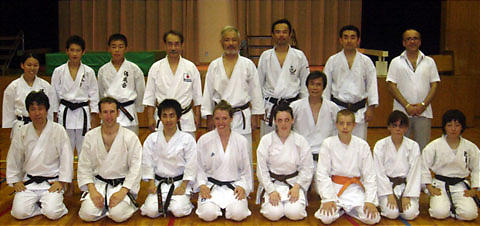
Picture time everyone!
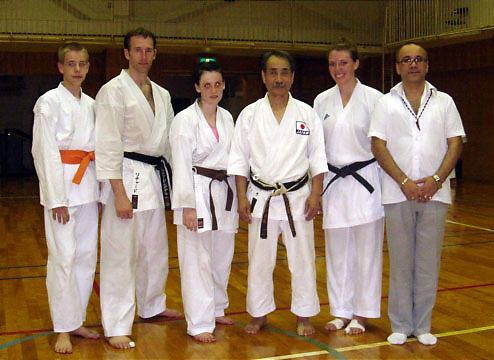
left to right: Marvin, Richard, Angeline, Takagi-Sensei, Jessica, and a gentleman from London who watched the class with his family.
Forgetting our students were in high school and not university, Takagi Sensei’s invitation to go drink beer and eat loads of great food had to be turned down (Sensei, their home stay families are expecting these.... err.. high school students) we were off again into the warm Tokyo night.
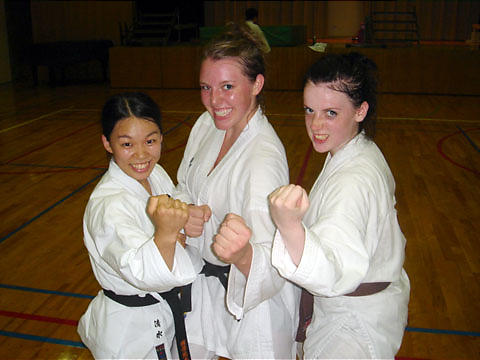
Do you wanna see 7 punches...? Do you wanna see them again? (And the famous athlete that said this was...wait for the trivia contest on Friday!)
The last adventure came later, as Jessica and Angeline went back home by themselves, but missed getting off at Akabane station (after I had clearly stated where to get off, please don’t think I was negligent, we’d done this train route a few times now) and had a bit of a fright riding into the next prefecture of Saitama. A nervous phone call to me just before 11pm from their home stay brother Hidetori had me prepare to go to my car to go look for them should they not arrive in a few minutes, but they did and talking to them on the phone they were laughing at themselves, in good spirits.
Another misadventure done, Day 10 was in the can!
Richard
(For those non-film makers and others new to English, when movies are shot on film, the film comes in round metal cans. After a roll of film is used, it's put back in the can and labeled, hence when something is done, it’s in the can!)
